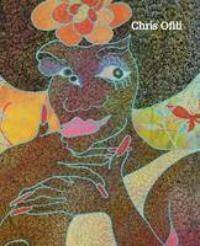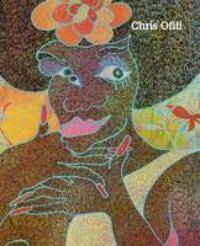
- Afhalen na 1 uur in een winkel met voorraad
- Gratis thuislevering in België vanaf € 30
- Ruim aanbod met 7 miljoen producten
- Afhalen na 1 uur in een winkel met voorraad
- Gratis thuislevering in België vanaf € 30
- Ruim aanbod met 7 miljoen producten
Zoeken
Omschrijving
The British painter Chris Ofili was born in Manchester in 1968 and is one of the most notable painters of his generation. He lives and works in London and Trinidad. Ofili's best-known works are complex and highly decorative canvases, built up from layers of paint combined with other materials including sequins, glitter, map pins and images cut from magazines. Their subject matter often refers to his Nigerian heritage and the wider African American and Afro-Caribbean experience, making reference to sources as diverse as Zimbabwean cave paintings, blaxploitation movies, comic books, funk and hip-hop album covers, pornography and the Bible. A trademark element in his paintings has been his use of varnished elephant dung, sometimes decorated with map pins, either as a support for the paintings or applied directly to the canvas. Ofili's painting "The Holy Virgin Mary" caused controversy when it arrived in Brooklyn in 1999 as part of the exhibition Sensation where it was attacked by then-mayor Rudi Guiliani for being blasphemous. Ofili won the Turner Prize in 1998 and represented Great Britain in the Venice Biennale of 2005. In recent years he has also created sculpture in bronze and numerous works on paper. The book will illustrate works from throughout Ofili's career, including new works made especially for this exhibition. It will include a new interview with the artist, giving insight into his inspiration and motivation, as well as including essays by leading critics that examine the remarkable achievements of an artist at the forefront of the contemporary art scene worldwide.
Specificaties
Betrokkenen
- Auteur(s):
- Uitgeverij:
Inhoud
- Aantal bladzijden:
- 176
- Taal:
- Engels
Eigenschappen
- Productcode (EAN):
- 9781854378705
- Verschijningsdatum:
- 21/01/2010
- Uitvoering:
- Paperback
- Afmetingen:
- 210 mm x 255 mm
- Gewicht:
- 800 g

Alleen bij Standaard Boekhandel
+ 55 punten op je klantenkaart van Standaard Boekhandel
Beoordelingen
We publiceren alleen reviews die voldoen aan de voorwaarden voor reviews. Bekijk onze voorwaarden voor reviews.











